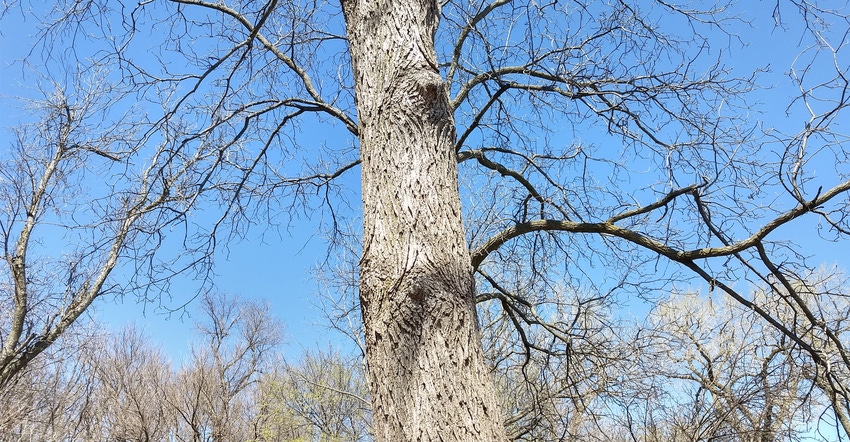April 22, 2022

When selecting a site for your vegetable garden, it is easy to overlook trees that may be growing near that site. Not only do trees shade a garden and potentially limit the amount of direct sunlight your vegetables would receive every day, but they also compete for water. And if the tree is a black walnut, you will likely want to choose a different site.
Why? Because black walnut trees produce a toxic substance called juglone that prevents many plants from growing. The toxic effects of a black walnut tree can extend up to 50 to 80 feet from the trunk of the tree, with the greatest toxicity occurring within the tree’s dripline. A tree’s dripline is the area between the trunk of the tree and the end of its branches. In this area, plants susceptible to juglone may wilt or die, while plants tolerant to juglone will grow normally.
Vegetables such as tomatoes, potatoes, rhubarb, eggplant and peppers are susceptible to juglone, and flowering plants and bushes that are affected by juglone include peonies, lilacs, azaleas and rhododendron.
Effects of black walnut toxicity
Plants sensitive to juglone may be stunted, have yellow or brown twisted leaves, exhibit wilting of some or all plant parts, and die over time.
Symptoms may occur within a few days after sensitive plants, flowers and bushes are transplanted into a walnut tree’s root zone. However, some plants may survive for years near a young walnut tree but will wilt and die as the tree increases in size.
I have firsthand experience with locating a vegetable garden near a young walnut tree. After growing vegetables on this site for four years, the fifth year, my sons and I noticed that our potatoes, tomatoes and peppers had wilted a few weeks after we had planted them. The plants didn’t die, but they only yielded a fraction of the produce we were used to getting.
I remember calling our county Extension office and talking to a Master Gardner, who asked me if our garden was located near a black walnut tree. I checked and reported a black walnut tree we had planted as a sapling 10 years before was, in fact, growing next to our garden. Until that moment, I had never heard of juglone. The following year, we found a site for our garden that was no where near a black walnut tree.
Most trees, vines, shrubs, annuals, perennials, corn, beans, onions, beets and carrots are tolerant of juglone.
There is no cure for a plant affected by walnut toxicity. Cutting down a black walnut tree may not be practical, as the tree may be the focal point in a yard. And even if a black walnut tree is removed, juglone will not immediately be eliminated because it is next to impossible to remove all root pieces from the soil, and remaining pieces may continue to ooze toxins for several years as they decay.
So, select a location for your garden with care, and avoid choosing a site near black walnut trees.
Comments? Email [email protected].
You May Also Like




